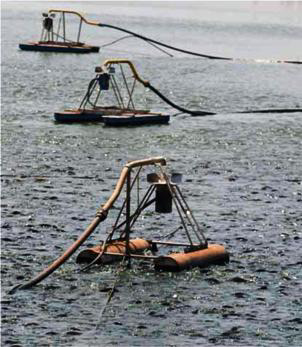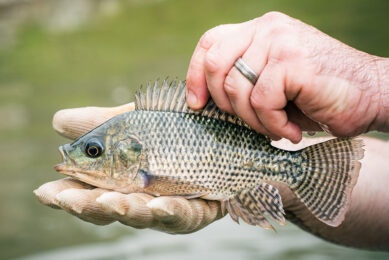The role of rendered products in aquaculture feeds

With feed costs usually representing over half the operating cost of most finfish and shrimp farming operations, and an economic climate of steadily increasing feed ingredient and processing costs, considerable efforts have been placed by feed manufacturers on reducing feed costs through improvements in ingredient selection and feed formulation.
Total global compound aquafeed production has been growing at an average rate of 10.7% per year since 1995, with production increasing over four-fold from 7.61 million tonnes in 1995 to 35 million tonnes in 2010, and expected to grow to 50 million tonnes in 2015, and over 70 million tonnes by 2020. Farmed fish ranks 4th in terms of global meat production and has the fastest annual growth. In China farmed fish production is 2nd to total meat production and is bigger than poultry.Although industrially compounded aquaculture feeds represent only about 4% of total global animal feed production (estimated at 718 million tonnes in 2010), the aquaculture feed sector consumed over 73% of the total global fishmeal production and over 80% of the total global fish oil production in 2010. In addition to the above, it is estimated that the aquaculture sector also consumed between 5 and 7 million tonnes of lower-value forage fish as a direct feed source.Notwithstanding the above, terrestrial animal protein meals and fats derived from the agricultural production of farmed livestock represent the largest source of feed-grade animal protein and lipid available in the global market place, with total global production currently estimated at about 13 and 10 million tonnes in 2010, respectively. This compares with an estimated total global production of about 5 million tonnes for fishmeal and 1.0 million tonnes for fish oil. With increasing pressure being placed by society on these precious and finite resources for direct human consumption, clearly the aquaculture feed sector has no choice but to reduce its current dependence upon these commodities, and source feed ingredients that can be sustainably produced in quantities that can keep pace with the growth of the aquafeed sector, and by so doing ensuring the long term sustainability of the aquaculture sector dependent upon compound feed inputs.
Animal protein meals
Current usage of terrestrial animal protein meals and oils within commercial aquafeeds (may include the use of poultry by-product meal, hydrolysed feather meal, blood meal, porcine meal, or meat and bone meal, depending upon the feeding habit of the species cultured and country) continues to increase within non-European countries (where the use of these products is not restricted), as fishmeal prices rise and the feed industry learns to make better use of these valuable and much needed feed ingredient sources. The fact that non-European feed manufacturers are able to utilise this vast additional source of high quality animal protein and fat allows them to be less reliant on the use of fishmeal and fish oil as dietary nutrient sources, and by virtue of their greater availability and lower cost, allows them the possibility of being more cost competitive than their European counterparts. According to the European Commission the only animal by-products (ABP) which can be used within aquafeeds are Category 3 ABP, namely those animal by-products or parts of slaughtered animals, which are fit for human consumption in accordance with Community legislation (European Commission Regulation No. 1774/2002 and No. 999/2001), but are not intended for human consumption for commercial reasons, including:
Current usage of terrestrial animal protein meals and oils within commercial aquafeeds (may include the use of poultry by-product meal, hydrolysed feather meal, blood meal, porcine meal, or meat and bone meal, depending upon the feeding habit of the species cultured and country) continues to increase within non-European countries (where the use of these products is not restricted), as fishmeal prices rise and the feed industry learns to make better use of these valuable and much needed feed ingredient sources. The fact that non-European feed manufacturers are able to utilise this vast additional source of high quality animal protein and fat allows them to be less reliant on the use of fishmeal and fish oil as dietary nutrient sources, and by virtue of their greater availability and lower cost, allows them the possibility of being more cost competitive than their European counterparts. According to the European Commission the only animal by-products (ABP) which can be used within aquafeeds are Category 3 ABP, namely those animal by-products or parts of slaughtered animals, which are fit for human consumption in accordance with Community legislation (European Commission Regulation No. 1774/2002 and No. 999/2001), but are not intended for human consumption for commercial reasons, including:
- Fishmeal (with restrictions – intra species recycling is prohibited, see Regulation (EC 999/2001);
- Dicalcium phosphate and tricalcium phosphate of animal origin (with restrictions);
- Non-ruminant blood meal and blood products (with restrictions);
- Milk, milk based products and colostrums (without restriction);
- Eggs and egg products (without restriction);
- Hydrolysed protein from ruminant hides/skin (without restriction);
- Hydrolysed protein from non-ruminants (without restriction);
- Gelatine from non-ruminants (without restriction);
- Animal fats (without restriction);
- Collagen from non-ruminants (without restriction).
However, it is hoped that within the very near future the European Commission will allow the use of poultry by-product meals within compound aquafeeds and so assist the aquaculture feed sector toward even greater sustainability and profitability.











